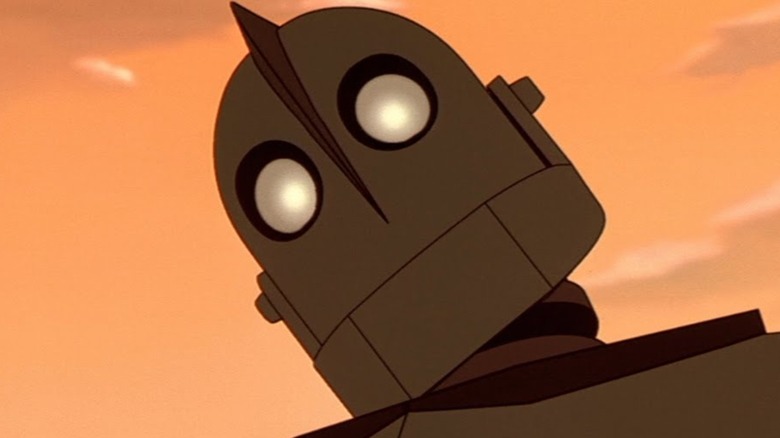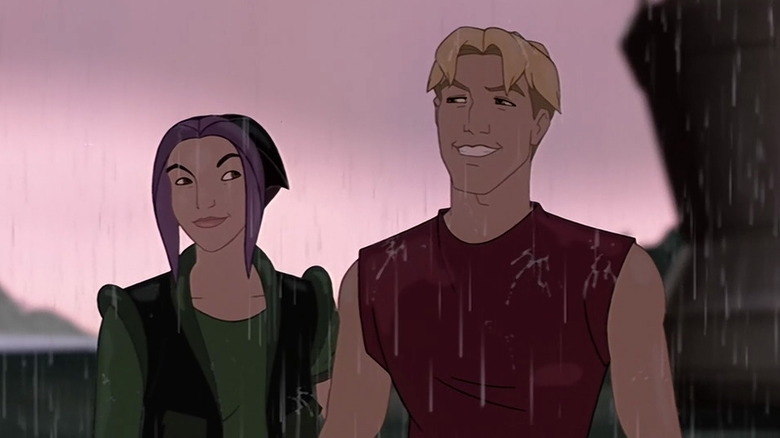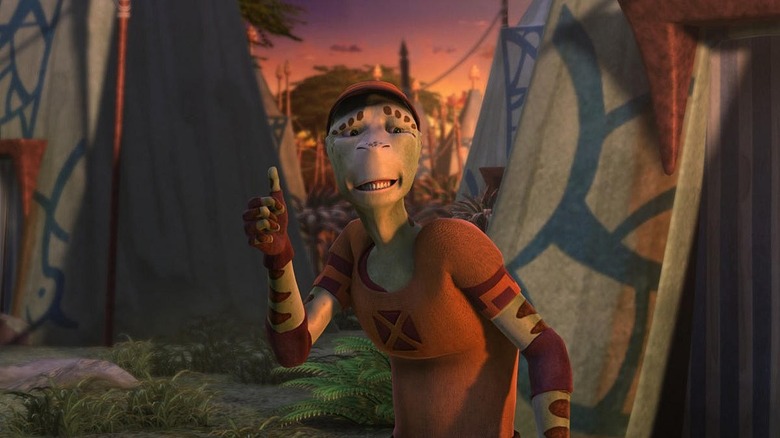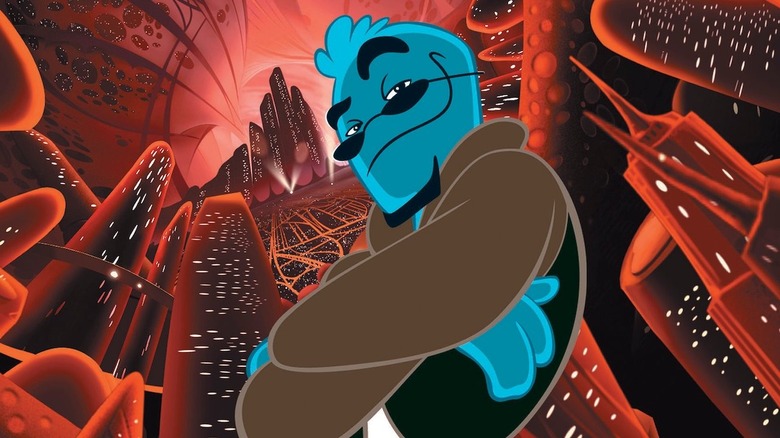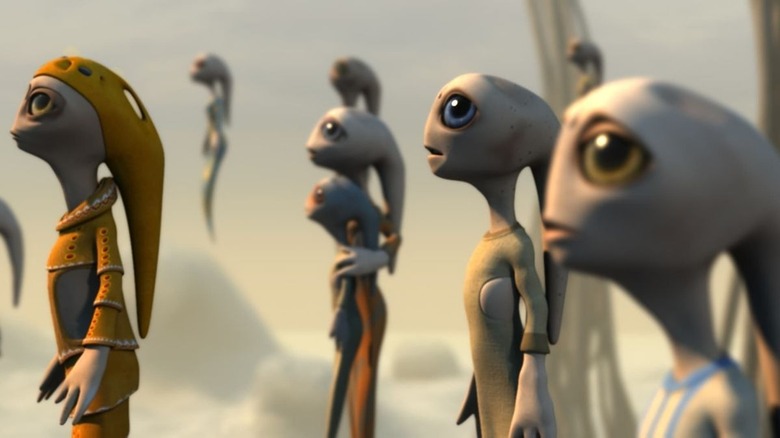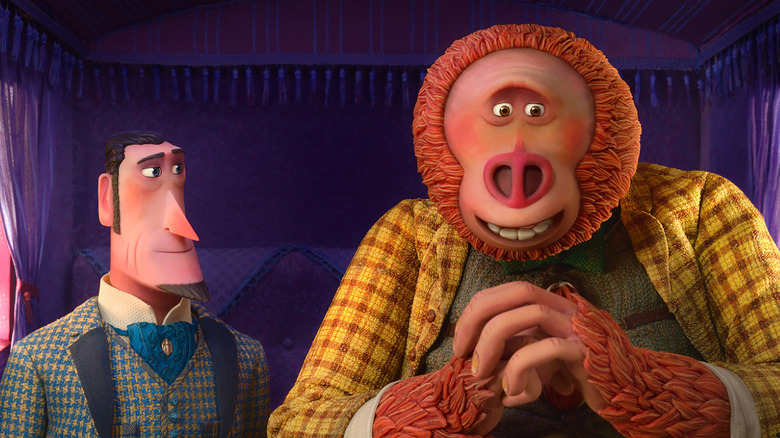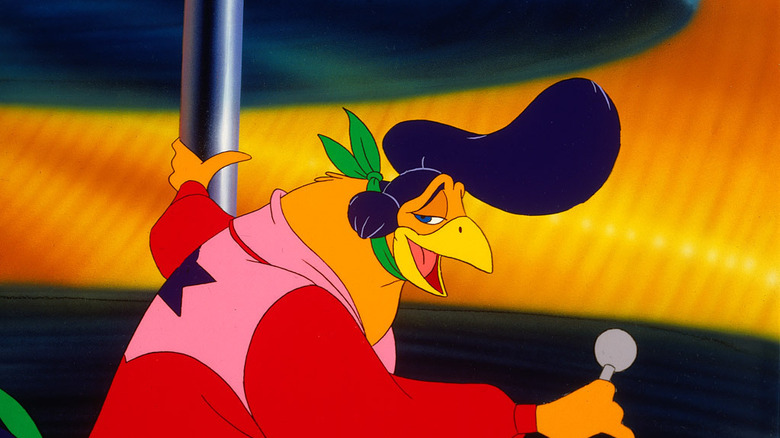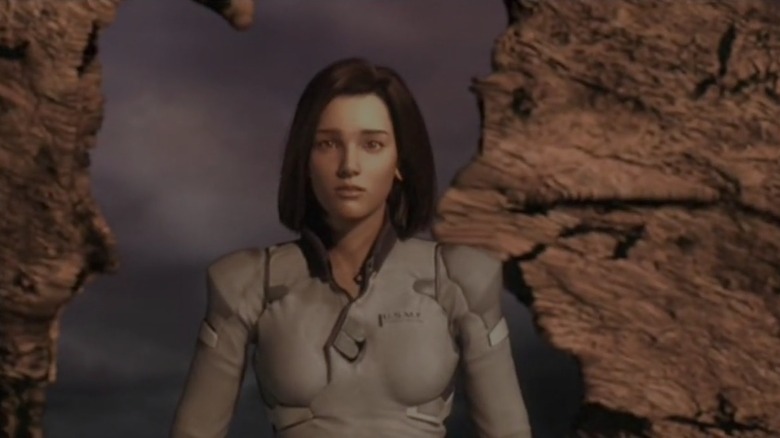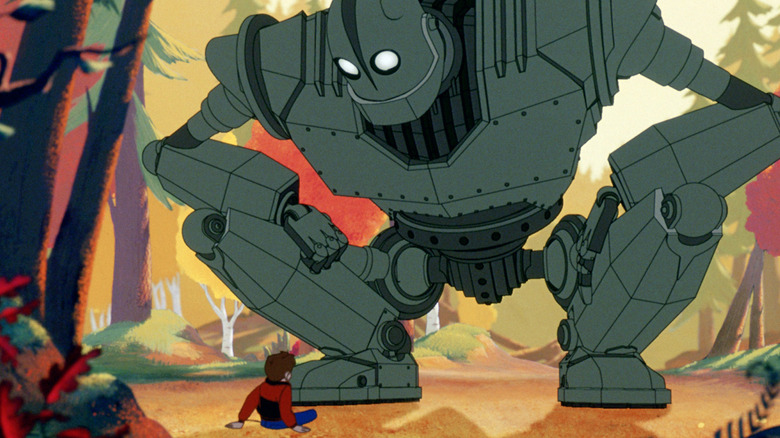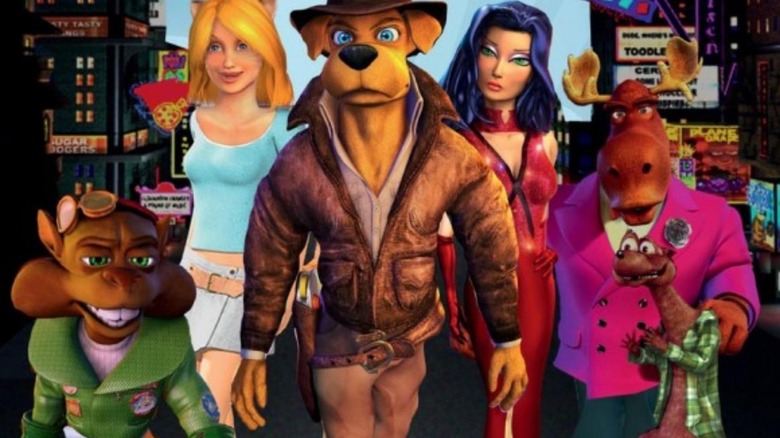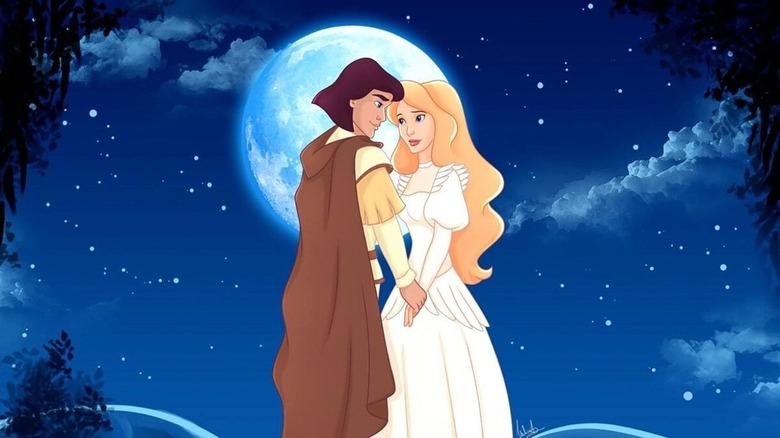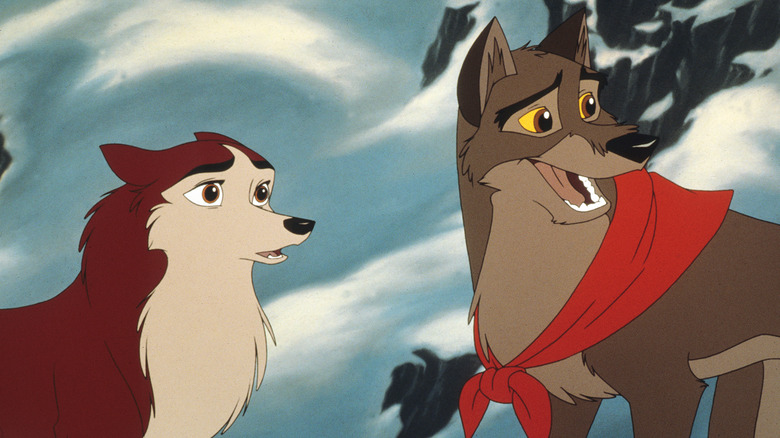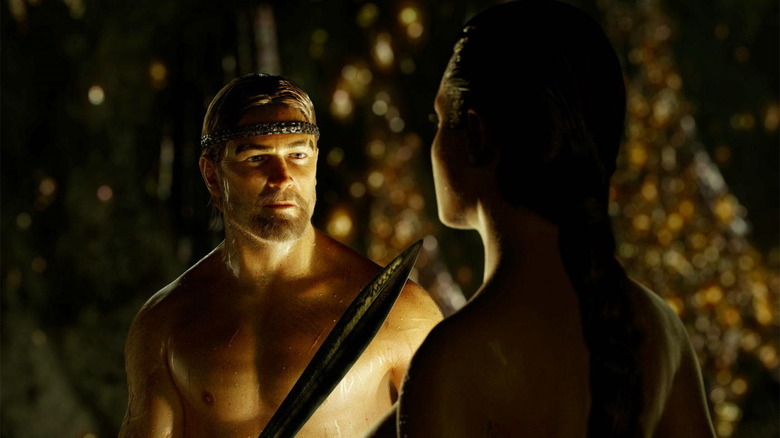The Biggest Animated Movie Bombs Of All Time
In the modern world, animated movies are big business. According to The Numbers, a quarter of the 20 biggest movies of all time at the worldwide box office are fully-animated projects. Features told in the medium of animation have long been seen as a reliable way to make a buck, and that has never been more true than in the cinematic landscape of the 21st-century than now.
However, that doesn't mean producing a project in animation means it'll be an automatic moneymaker. In fact, over the years, several animated movies have crashed and burned at the box office in a truly shocking manner. Tens of millions of dollars have been lost on the biggest animated box office bombs of all time, and the process of creating these productions can sometimes drain studios of money just as much as something like "Frozen" can print money for Disney.
There's no one way to make an animated movie, and there is not just one reason why an animated film tanks at the box office. Perhaps the marketing went awry, maybe the story didn't fit the pop culture zeitgeist, or there could've been problems with the project's distributor. These and countless other reasons help illuminate what went wrong with some of the biggest animated movie box office bombs. Here, we'll take a look at some of the biggest animated box-office disappointments of all time with an eye towards just what led each one astray.
Titan A.E.
The history of Fox Animation Studios is one riddled with wasted potential. No production illustrates this better than "Titan A.E.," which hit movie theaters in June 2000 and proved to be such a gigantic box office flop that it contributed to the studio's closure, as noted by the Los Angeles Times. This was no overreaction either, as "Titan A.E." grossed just $36.7 million worldwide on a $75 million budget. A massive money loser for its financiers, the box office sum of "Titan A.E." looked especially embarrassing given how it made so much less than Disney Animation titles from the same year like "Dinosaur" and "The Emperor's New Groove."
The complete failure of "Titan A.E." may have seemed confounding at the time of its release, especially since 20th Century Fox had given it a rampant marketing campaign that Forbes notes began on "The Phantom Menace" a year prior. However, in the context of early 2000s animated cinema, it becomes clear that "Titan A.E." was part of a broader trend of American audiences ignoring action-oriented cartoons.
"Atlantis: The Lost Empire," "Treasure Planet," "Sinbad: Legend of the Seven Seas," all of them lost money in the years after "Titan A.E." People wanted to see buddy comedies like "Shrek," not epic productions like "Titan A.E." The pop culture zeitgeist rejected this Don Bluth directorial effort and in the process sunk the nascent Fox Animation Studios.
Delgo
Some animated movies disappoint at the box office. Some animated movies bomb at the box office. And then there are animated movies, like "Delgo," that make history with their financial woes. Dropping into movie theaters in December 2008, expectations were not high for the project given its tormented production and that micro-studio Freestyle Releasing was distributing it. However, nobody could've expected "Delgo" to score the worst opening weekend in history, at the time, for a movie debuting in over 2,000 theaters, grossing just $511,920 in its first three days of domestic release, according to Box Office Mojo.
After just seven days, "Delgo" was pulled from theaters, and the film wound up grossing just $694,782 at the box office, with its performance being so bad that it never scored an international theatrical release. It's difficult to properly fathom just how poorly "Delgo" did in its theatrical run, though a reminder that it carried a $40 million price tag should reinforce the sheer amount of money lost. Though there wasn't just one reason why this movie bombed, an awkward mid-December release date, placing "Delgo" right in between the releases of competing family titles like "Bolt" and "Marley and Me," certainly didn't help matters.
Plus, action-oriented animation has often had a hard time attracting family moviegoers. Even Disney couldn't make explosion-laden features like "Treasure Planet" big hits. However, rarely has this subgenre delivered something that struggles as badly at the box office as "Delgo."
Osmosis Jones
Though Warner Bros. is home to some of the most iconic animated characters of all time, including Bugs Bunny and Daffy Duck, the studio has shown a shockingly erratic box office track record for releasing animated movies. For every "The LEGO Movie" or "Happy Feet," there's a bunch of titles like "The Ant Bully" or "Quest for Camelot" which reflect the lowest points of the studio's forays into making animated movies. Among those low points is the 2001 project "Osmosis Jones," which aimed to provide an inside look at the secret lives for germs that "Toy Story" delivered for toys.
Whereas people had always wondered what playthings might do when their back is turned, people haven't always been contemplating the daily lives of their white blood cells. The lack of universality in the premise for "Osmosis Jones" led to it flatlining at the box office when it debuted in August 2001 to the second-worst animated movie opening weekend of the year, according to Digital Media FX. From there, family audiences continued to ignore the project, and "Osmosis Jones" ended its worldwide box office run earning just $13.5 million on a $70 million budget.
Though Warner Bros. has a prominent place in the history of American animation, titles like "Osmosis Jones" show the studio has also proved historic in the wrong kind of ways when it comes to releasing unforgettable animated box office duds.
Battle for Terra
The independently produced sci-fi animated film "Battle for Terra" had to know the odds were against it when it dropped into movie theaters in May 2009. Marketed as an action-heavy project in a marketplace dominated by lucrative animated features about celebrity-voiced animals, "Battle for Terra" was a departure from the norm for successful animated motion pictures. It was also opening in only 1,161 theaters, a sharp contrast to the 4,000+ theater count of the average DreamWorks Animation. Shocking no one, "Battle for Terra" couldn't overcome these challenges and became a box office dud.
This production grossed just $6.3 million, only $1.6 million of which came from a very frontloaded domestic box office performance. This made it one of the lowest-grossing CG-animated films at the time, a stark reminder that creating a project in this medium of expression was not inherently a guarantee of success. Sources for the film's budget vary greatly, with some sources pegging it at $4 million while the director described it in an interview with Animation World Network as "under $20 million".
Whatever the official cost, a professionally-produced CG animated film like "Battle for Terra" needed to make way more than $6.3 million to be seen as a profitable enterprise. The 2000s were not kind to animated sci-fi action films (see also: "Titan A.E." or "Atlantis: The Lost Empire"), and "Battle for Terra" capped off a poor decade for this subgenre on an appropriately disastrous note.
Missing Link
Stop-motion animation house LAIKA hit it out of the box office ballpark with its inaugural film "Coraline," which became one of the highest-grossing stop-motion animated films in history, according to The Numbers. Unfortunately, since then, the studio has regularly struggled to make that financial magic strike twice. Subsequent efforts like "ParaNorman" and "Kubo and the Two Strings" couldn't quite meet box office expectations, though they all performed much better than the 2019 project "Missing Link." If other post-"Coraline" LAIKA efforts were merely disappointing, "Missing Link" outright cratered in its domestic run.
Despite opening a pre-Easter weekend release date that had worked wonders for countless other animated family movies in the past, "Missing Link" grossed just $25.3 million worldwide. This included a $16.6 million domestic total that came in behind the North American opening weekend of earlier LAIKA film "The Boxtrolls." Given its $102 million budget, Deadline would later project that "Missing Link" lost $101.3 million for its financiers, making it one of the costliest box office flops of 2019.
Part of the issue here was U.S. distributor Annapurna's inexperience with launching family-friendly titles, as well as competition from other family-friendly fare released at the same time like "Dumbo" and "Shazam!" Problems like these combined to ensure that "Missing Link" became the most obvious example of LAIKA struggling to deliver the next "Coraline" at the worldwide box office.
Rock-A-Doodle
Throughout the 1980s, Don Bluth was on to something special. In an age when Walt Disney Animation Studios was running on autopilot, titles like "The Secret of NIMH" and "An American Tail" drew critical acclaim for delivering daring animation and poignant narratives. But just as Walt Disney Animation Studios recovered its mojo with titles like "The Little Mermaid," Bluth hit a creative rut in the 1990s. This was made apparent in his first directorial effort of the 1990s, "Rock-A-Doodle."
On an $18 million budget, "Rock-A-Doodle" grossed just $11.6 million. This pitiful result was significantly down from previous Don Bluth directorial efforts and barely came in ahead of the North American haul of "The Secret of NIMH" from a decade earlier. "Rock-A-Doodle" was always going to be held back by its distributor, Samuel Goldwyn Entertainment. While earlier Bluth movies were released by MGM and Universal Pictures, "Rock-A-Doodle" was handled by a studio that has only ever released seven titles that have cracked $10 million in North America. It's also worth noting that prior Bluth movies, like "All Dogs Go to Heaven" or "An American Tail," debuted over prime Thanksgiving release dates, a holiday that's often kind to family movies. By contrast, "Rock-A-Doodle" premiered in April, a month that's produced far fewer box office juggernauts.
Regardless of the reasons for this dismal performance, "Rock-a-Doodle" had a huge impact on Bluth's career, and Variety reports that his studio had to file for bankruptcy less than two years after the debut of this project.
Final Fantasy: The Spirits Within
Whenever you hear artists talk about the challenges of animating computer-generated humans, you're bound to hear the term "the uncanny valley." This refers to when CG humans look just realistic enough but also don't look quite right, leaving these creations trapped in a disturbing state. While productions like "Up" and "Spider-Man: Into the Spider-Verse" avoid this problem, a quintessential example of a movie tripped up by the uncanny valley is seen in "Final Fantasy: The Spirits Within."
This 2001 film adaptation of the famous video game crashed and burned at the box office, earning just $85.1 million worldwide on a massive $137 million budget. Spending this much on this project was always a fool's errand given that, as early as 2001, projects like "Super Mario Bros." had already given the video game movie a rather tragic reputation. It didn't help that July 2001 was packed with other live-action movies featuring convincing effects, such as "Jurassic Park 3," that wouldn't drag the audiences into the uncanny valley.
The Iron Giant
Today, "The Iron Giant" is a universally beloved movie that has graduated from cult classic to a full-blown staple of modern pop culture. Major blockbusters like "Ready Player One" and "Space Jam: A New Legacy" feature the film's titular character in their trailers as a way of generating buzz. Meanwhile, beloved sitcom "Ted Lasso" heavily featured "The Iron Giant" as part of a movie night for the show's soccer players and even referenced how this movie can reduce anyone to tears. If you were looking over just its presence in the current pop culture landscape, it'd be easy to assume "The Iron Giant" was always beloved.
However, in its initial 1999 theatrical box office run, "The Iron Giant" was a shockingly major box office dud. On a $50 million budget, this Brad Bird directorial effort only took in $31.3 million, $23.1 million of which came from a lackluster North American run. In the years since its premiere, Bird spoke in an interview with JoBlo about how distributor Warner Bros. botched the project's release, particularly in how little marketing they gave the film. Meanwhile, the then-President of Warner, Lorenzo di Bonaventura, attributed the film's failure to the inherent difficulty in releasing smarter kid-skewing movies.
Whatever the reasons for it, "The Iron Giant" was an indisputable box office dud, but it's managed to endure throughout the years to become an inescapable modern classic.
Foodfight!
The story behind "Foodfight!" is more fascinating than many acclaimed animated movies. Meant to be the "Toy Story" of supermarket items (in that it would explore what items at these stores do when humans aren't around), "Foodfight!" was plagued with constant delays and problems, as remembered by Animation Magazine. Eventually, the production petered out and was reclaimed by its investors, as reported by The Telegraph, who opted to rush a version of the project out to try and reclaim some money from the woe begotten production. Once meant for a lavish 2005 theatrical release, "Foodfight!" finally debuted on the big screen in a handful of international markets in 2012.
In these meager big screen runs, "Foodfight!" grossed only $73,706 on a $45 million budget. You don't need to be a box office expert to figure out what went wrong here. Minimal marketing and animation that became a punching bag on the internet ensured audiences wouldn't shell out cash to see "Foodfight!" in theaters. In North America, the film bypassed theatrical exhibitions in favor of a straight-to-video release. It was an unceremonious end to a movie whose production was an incredibly fraught journey. Needless to say, the box office total for "Foodfight!" reflected that this was not a must-have feature for moviegoers.
The Swan Princess
Today, there are tons of competitors to Disney's animated offerings, ranging from the works of Illumination studio to projects released by Netflix. The 1990s, though, were a different time, with several non-Disney cartoons released in this era coming up short at recapturing the Mouse House magic, as noted by the Los Angeles Times. Among those that tried and failed in this era was "The Swan Princess," which leaned hard on the Disney formula with its animated musical fairy tale based on the ballet "Swan Lake." Distributor New Line Cinema even gave the project a release tied to the Thanksgiving holiday during which Disney had premiered projects like "Beauty and the Beast."
"The Swan Princess" tried mighty hard to mimic animated movies from Disney — but one thing it couldn't quite replicate was that studios box office success. In fact, "The Swan Princess" cratered at the box office with just $9.8 million on a $21 million budget. The problems here were numerous, including the film's distributor, New Line Cinema, having minimal experience successfully releasing kid-friendly cartoons. A glut of animated fantasy musicals in the 1990s also kept "The Swan Princess" from standing out in the marketplace. Beyond that, Disney re-released "The Lion King" over Thanksgiving 1994 provided "The Swan Princess" with insurmountable competition. Though today the likes of "How to Train Your Dragon" can stand toe-to-toe with new Disney fare, 1990s projects like "The Swan Princess" got crushed by the Mouse House.
Balto
Universal Pictures had some solid success with animated movies in the 1980s thanks to "An American Tail" and "The Land Before Time." Arriving just before Disney Animation entered its renaissance period, many of Universal's projects filled a niche in the marketplace craving animated kid-friendly entertainment. The 1990s, when Universal launched the animation house Amblimation just as Disney got its mojo back with titles like "Beauty and the Beast," was far less kind to the studio and got capped off with the box office bomb "Balto."
Grossing only $11 million globally on a $31 million price tag, "Balto" was doomed by a movie that came out just three weeks before its premiere — "Toy Story." This game-changing computer-animated feature was everything a family movie would hope to be, funny, heartfelt, beautiful to look at. How could "Balto" compete with that?
Plus, the mere novelty of "Toy Story" being the first fully computer-animated motion picture gave it a sense of must-see importance that "Balto" couldn't hope to counter. As remembered by The New York Times, The dismal box office track record of other 1990s features from Universal and the animation studio Amblimation also set up a bad precedent for "Balto." Meanwhile, its marketing made the production look like it was aimed squarely at the youngest of kids. "Balto" closed the book on Universal's forays into animated cinema for more than a decade, though projects from Illumination like "Despicable Me" would later restore some of the studio's luster in this department.
Beowulf
In retrospect, it's interesting that Robert Zemeckis got three separate swings at making movies entirely realized through motion-capture animation, especially since none of them were significant moneymakers. "The Polar Express" has turned into a holiday season fixture, but it didn't break even on its initial theatrical release, according to the Los Angeles Times, while the 2009 project "A Christmas Carol" was an outright box office bomb. In between those two Yuletide movies was "Beowulf," which saw Zemeckis using this filmmaking technique to realize a classic piece of fantasy literature.
Though the name "Beowulf" may be well-known, audiences weren't super interested in checking out a gritty modern take on the property. In its worldwide box office run, "Beowulf" took in only $195 million on a massive $150 million budget. That price tag is a key reason why "Beowulf" failed to be a success. At the time of "Beowulf's" release 2007, only 18 fantasy movies had cracked $400 million in the history of the global box office, according to data compiled by The Numbers.
The track record of this genre just didn't justify "Beowulf's" $150 million costs, especially since it didn't have as famous of a brand name as "Lord of the Rings" or "Harry Potter" in its title. Though it did a bit better than average for animated cinema that isn't rated G or PG, "Beowulf" still turned into one of the more costly animated movie box office duds of the modern age.
